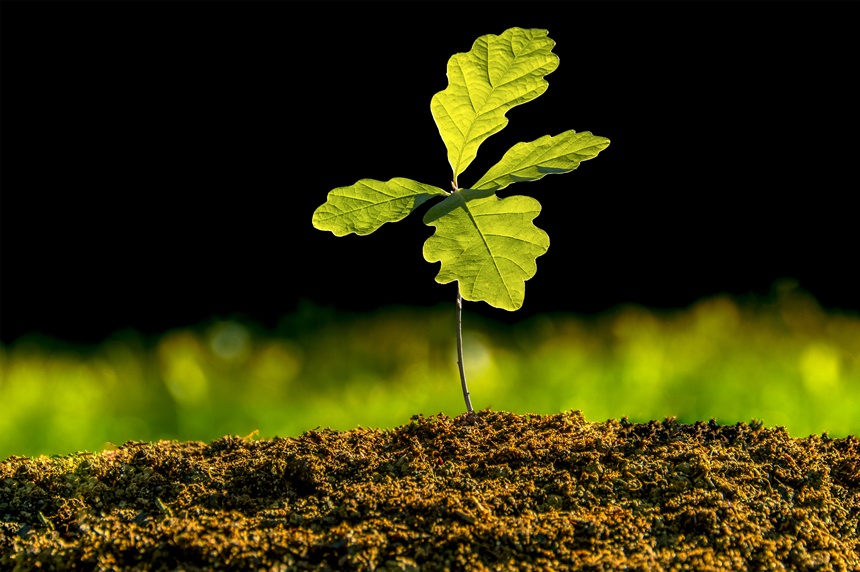Velcro Appreciation Week. Muskrat Month. Arbor Day. You know you have an obscure event on your hands when the greeting-card trade hasn’t even bothered to cash in on it. While not the best-known celebration, Arbor Day has a long and respectable history from its early roots in northern New York State, to its official birth in the U.S. Midwest, to its current status as a global celebration. Arbor Day, which falls on the last Friday in April, is now observed in at least 30 countries around the world, including China, Israel, New Zealand, and Yemen.
The man behind this annual one-day global tree-planting orgy, J. Sterling Morton, was born in 1832 in Adams, New York, a town at the eastern end of Lake Ontario. As a young man he moved to Illinois, and later to Nebraska, where in 1872 he germinated the notion of Arbor Day to highlight the need to increase timber availability in his adopted state. Morton’s son Joy went on to found the renowned Morton Arboretum, and Arbor Day went on to become a somewhat obscure, if virtuous, tradition.
Not only was J. Sterling passionate about planting trees, for him the act was sacred. He believed “The cultivation of trees is the cultivation of the good, the beautiful and the ennobling in mankind,” explaining that “Each generation takes the earth as trustees. We ought to bequeath to posterity as many forests and orchards as we have exhausted and consumed.”
I tend to agree with his lofty pronouncements. To plant a tree is to invest in the future, and is an act of generosity. When we add a tree to our community, it’s likely that many generations of people after our passing will enjoy it.
Trees enrich our lives in surprising ways. Many of us are aware that urban trees save billions of dollars in home energy costs, increase property values, filter pollutants, store carbon, and all that goody-gum-tree stuff. But few people know that shoppers spend more money when there are trees in a downtown shopping district, and that homes sell faster on tree-lined streets. Crime rates drop when urban neighborhoods are planted with trees. And lying under a tree in summer cures acne. Okay, I made that last one up, but the rest is true.
It may be noble to plant a tree, but it has to be done right or you may as well rent the thing. A poorly planted tree will live but a fraction of its potential lifespan. Location is the first issue. Kids and trees look cute when they come home from the nursery, but they grow up fast and often take up more room than we expected. If a site is under wires or has restricted space for branches or roots, the right species and variety is needed that can reach full-size without causing conflicts.
Trees also have to be well-suited to your climate. The U.S. Department of Agriculture publishes a Plant Hardiness Zone Map so you can match your location to the Zone(s) listed on the tags of trees at the garden center or nursery.
The old adage “dig a fifty-dollar hole for a five-dollar tree” may need to be adjusted for inflation, but the idea still has currency. Ninety percent of tree roots are in the top ten inches of soil. To reflect this fact, the planting hole should be saucer-shaped and 2-3 times the diameter of the root system, but no deeper – ever, or the Planting Police will ticket you. Okay, that’s fiction too, but if an arborist happens to come along, they may scowl ominously.
It’s imperative the trunk flare be at ground level, because deep planting leads to serious future health problems. For the tree, mainly. Here’s an arborist joke: What do you call a three-foot-deep planting hole for a tree? Its grave.
Before backfilling, remove all burlap and twine. Wire cages on ball-and-burlap (B&B) trees should be cut away, or at least stomped to the bottom of the hole. Container-grown root systems may have circling roots that should be teased out straight. This may require a series of vertical cuts into the root ball.
With extreme sandy or clayey soils, peat moss or compost can be mixed in the backfill up to 30 percent by volume. More than that lead to root suffocation. Fertilizer is stressful on transplants, so wait at least a year on that.
Water as you backfill, prodding the soil with a stick to remove large air pockets. Unless the site is very windy, it’s best not to stake the tree. Trunk movement stimulates root growth and strengthens the trunk as well. Add between 2 and 4 inches of mulch over the planting area (but not touching the trunk) to conserve moisture, suppress weeds, and improve soil quality.
It’s hard to over-water a new transplant, but it can happen. Throughout the first season, check the soil every few days to be sure it’s moist but not waterlogged.
For more tree-planting information, contact your local Extension office, or visit The Arbor Day Foundation’s website. Happy Arbor Day!
Become a Saturday Evening Post member and enjoy unlimited access. Subscribe now




Comments
Pretty good article, but definitely contact your local Extension Office (every state has an Extension Office in every County or Parish). I have clay soil and if I planted according to the directions Paul lays out, my tree would die.
With clay soil you need to plant using the Saucer Method: dig a shallow wide saucer, twice as wide as the rootball but leave the top third of the rootball above grade. Once positioned in the hole, remove any burlap, cage, or twine. Backfill to cover the rootball.
I also cover the area with mulch to keep the roots cool, hold in moisture, and reduce weeds. I also never allow lawn under the dripline of the tree (if the crown of the tree is an umbrella, the dripline is where the rain runs off).
Trees are a big investment in money and time, planting it for the soil you have can lead to a better chance of success.